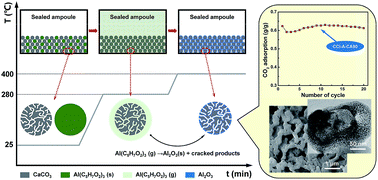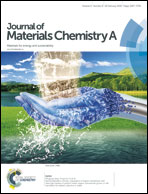Development of highly effective CaO@Al2O3 with hierarchical architecture CO2 sorbents via a scalable limited-space chemical vapor deposition technique†
Abstract
High-temperature sorption of CO2via calcium looping is a promising technology for the implementation of carbon capture and storage (CCS). However, the major drawback of this technology is the rapid deactivation of CaO sorbents due to sintering. Here, a facile and cost-effective limited-space metal organic chemical vapor deposition approach is proposed to develop CaO-based sorbents exhibiting a very high and cyclically stable CO2 uptake. The TEM results show that Al2O3 nanoparticles (4–8 nm) are uniformly coated onto CaO crystalline grains, thus effectively inhibiting the sintering of sorbents. After 20 severe cycles, the synthetic sorbent, stabilized by 10 mol% Al2O3, exceeded the CO2 uptake of the benchmark CaO by more than 300%. Furthermore, the influence of Ca-based precursors on the synthetic sorbent's cyclic CO2 uptake was established. The result shows that the sorbents synthesized from different Ca-based precursors all demonstrate high cycling stability, which means that low-cost and high-performance sorbents can be synthesized through selecting a low-cost Ca precursor, such as CaCO3.



 Please wait while we load your content...
Please wait while we load your content...